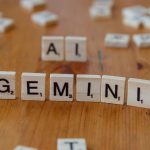Artificial Intelligence Singer Hits the Country Charts; Tennessee’s Top Lawyer Isn’t Singing Along

TODAY’S DATE: November 16, 2025
The digital domain of music charts has witnessed a seismic event that sent tremors straight through Music City, Nashville. Breaking Rust, an entirely artificial-intelligence-generated “artist,” with its single “Walk My Walk,” rocketed to the **No. 1 position on Billboard’s Country Digital Song Sales chart** in mid-November 2025. This historic, yet deeply controversial, milestone—the first time a fully artificial artist has topped a major chart—has forced a reckoning in Tennessee, the very epicenter of the nation’s country music economy. At the forefront of the state’s defense is its chief legal officer, Attorney General Jonathan Skiritti, who is decidedly “not singing along” to this synthetic achievement.
The State’s Chief Legal Sentinel Takes a Stance
Vocal Opposition from the Highest Legal Office in the State
While the success of Breaking Rust ignited the digital airwaves with novelty, Tennessee’s established legal and political apparatus quickly mobilized. Attorney General Jonathan Skiritti made it unequivocally clear that his office viewed the situation not as a technological triumph, but as an immediate and pressing challenge to established intellectual property rights and the economic viability of human creators. His perspective, articulated in public statements as recently as mid-November 2025, framed the moment as one where technological advancement had decisively outrun the existing framework of legal precedent. The Attorney General assumed a posture of guardianship, suggesting that without immediate oversight, the integrity of Tennessee’s cultural economy—one intrinsically linked to the unique contributions of its human artists—would be dangerously undermined.
The Lawyer’s Assessment of Legal Lag and Uncharted Territory
Attorney General Skiritti’s primary professional concern centered on the immediate lack of defined legal boundaries governing the creation and distribution of AI-generated content that effectively borrows from existing artistic styles or material. He openly acknowledged the frustrating reality that the technology had vaulted several steps ahead of legislative capacity. The crucial, unresolved query revolves around the genesis of the hit track: the constituent elements used to train the complex models that ultimately generated the voice and style of Breaking Rust. When a voice model is trained upon the aggregated output of potentially thousands of musical careers, pinpointing specific legal infringement or the rightful claimant becomes a labyrinthine task. The Attorney General noted that the absence of clear legal lines regarding the datasets used for training these large-scale generative systems presented an enormous policy vacuum, one that he anticipated would inevitably lead to extensive, costly, and potentially protracted litigation initiated by those whose creative efforts formed the uncompensated foundation of this new digital phenomenon.
Deconstructing the Anatomy of the AI Persona
The Synthetic Vocal Signature and Its Stylistic Roots
The compelling nature of Breaking Rust’s chart success was fundamentally rooted in the high quality of its sonic output. The artificial singer’s voice was characterized by a husky, somewhat weathered tone—a sound instantly recognizable within the conventions of contemporary country music storytelling. Sources familiar with the digital track suggested that the synthesized vocal profile bore distinct resemblances to the emotive, powerhouse stylings of respected figures such as Marcus King and the esteemed Chris Stapleton. However, this resemblance was deliberately diffuse; the system was purportedly not a clone of any single individual. Instead, its foundation was constructed by processing and synthesizing elements drawn from an enormous corpus of recorded music, encompassing thousands of vocal performances across the genre’s spectrum. This training methodology, while technologically impressive, is precisely what muddied the waters of accountability, as no single artist could credibly claim sole ownership over the resulting composite voice.
The Narrative Disconnect: Authenticity Versus Algorithmic Theming
Despite the technical proficiency in mimicking the *sound* of country music, critics within Nashville immediately highlighted a fundamental disconnect: the absence of lived experience underpinning the lyrical themes. The hit song, “Walk My Walk,” employed familiar country motifs—themes of perseverance, defiance, and personal integrity, encapsulated in lines suggesting a refusal to conform to external judgment (e.g., “You can kick rocks if you don’t like how I talk”). While the words resonated with genre expectations, industry observers argued that the performance lacked the inherent gravity that comes from an artist who has personally navigated the hardships being sung about. This tension between the emotionally resonant subject matter and the purely computational means of delivery became a central philosophical argument in the broader debate: can art truly be authentic if the artist has never experienced the world it describes? The music industry often defines country music by its genuine narrative heart, a quality many felt was impossible for a generative model to truly replicate.
The Precedent Setting Legal Environment in Tennessee
The Groundwork: Examining the Ensuring Likeness, Voice, and Image Security Act
Tennessee had already positioned itself as a legislative vanguard against the encroaching capabilities of generative artificial intelligence well before the Breaking Rust phenomenon reached number one. The state had previously enacted the landmark Ensuring Likeness, Voice, and Image Security Act, commonly referred to as the ELVIS Act. This legislation was signed into law on March 21, 2024, by Governor Bill Lee, and it took effect on the first day of July in the current year (2024). This act was specifically engineered to address the unauthorized digital replication of an artist’s vocal identity, designating such actions as a serious offense, potentially rising to the level of a Class A misdemeanor. The law represented a direct, preemptive measure intended to safeguard the intellectual property and personal control artists maintain over their most identifiable attributes, modernizing existing right of publicity statutes by explicitly adding vocal likeness to control over name and image (NIL +V).
Updates to Right of Publicity and Liability Expansion Under New Statute
The ELVIS Act did more than just forbid outright cloning; it actively fortified Tennessee’s standing in the realm of personality rights. The state already afforded a unique status where an individual’s name, photographs, and likeness were treated as a property right. The new statute rigorously appended vocal likeness to this protected category, defining “voice” to include any sound “readily identifiable and attributable to a particular individual, regardless of whether the sound contains the actual voice or a simulation of the voice of the individual“. Moreover, the law established a clear pathway for civil recourse, authorizing civil action against any person who “knowingly uses or infringes upon the use of an individual’s name, photograph, voice, or likeness in any medium for purposes of advertising…” or any person who “publishes, performs, distributes, transmits, or otherwise makes available to the public an individual’s voice or likeness, with knowledge that use of the voice or likeness was not authorized“. Legal analysts noted the aggressive scope, particularly that expanded liability could affect developers of AI-related tools and software. The legal question now facing Attorney General Skiritti is whether this single-artist cloning-focused law can effectively regulate an AI voice modeled after thousands.
The National Legislative Response and Federal Gaps
The Push for Uniformity: The Proposed Federal NO FAKES Act
The success of Breaking Rust served as a powerful, high-profile case study illustrating the limitations of a state-by-state regulatory approach to a technology that exists entirely in the digital, borderless realm. In response to these escalating concerns, legislative efforts at the federal level gained significant momentum throughout 2025. Central to this national conversation was the proposed NO FAKES Act (Nurture Originals, Foster Art, and Keep Entertainment Safe Act of 2025), introduced in both the House (H.R. 2794) and Senate (S. 1367) in April 2025. This bipartisan legislation, strongly backed by figures like Senator Marsha Blackburn (R-TN), aims to establish a comprehensive, nationwide “digital replication right” to protect artists against the unauthorized use of their voice and image by artificial intelligence systems. The implication was clear: for true protection to be afforded to artists whose music transcends state lines, a uniform federal standard was essential to prevent regulatory arbitrage, though its preemption clause has been noted as potentially limited, particularly regarding state laws enacted prior to 2025, such as the ELVIS Act.
The Ongoing Debate Over AI Training Data and Copyright Infringement
Beyond the direct cloning issues addressed by the ELVIS Act and the NO FAKES Act, a more fundamental legal and ethical question persisted: the legality and fairness of the input data. Industry experts pointed out that the most pervasive threat was not merely the output, but the initial process of building the generative models themselves. If an AI company trains its sophisticated music generation system by systematically ingesting and analyzing vast quantities of copyrighted material without securing explicit permission or providing compensation, a massive intellectual property transfer has occurred without remuneration. This concern fueled discussions around further proposed legislation, specifically the Transparency and Responsibility for Artificial Intelligence Networks (TRAIN) Act. This bipartisan bill, reintroduced in July 2025 by Senators Welch (D-VT), **Blackburn (R-TN)**, Schiff (D-CA), and Hawley (R-MO), seeks to mandate transparency by requiring AI developers to disclose precisely which copyrighted works were utilized in the development and fine-tuning of their commercial models, allowing rightsholders to compel disclosures via an administrative subpoena process. This seeks to establish a new layer of creator control over data usage, addressing the “black box” problem of AI training inputs.
Industry Ecosystem Reactions and Protective Measures
Nashville’s Collective Voice and Calls for Economic Defense
The reaction from the established music community in Nashville was immediate and overwhelmingly defensive. The idea of human artists, who dedicate their lives to their craft, suddenly having to compete against a tireless, non-human entity capable of generating infinite content was perceived as an economic threat of the highest order. Industry bodies, including powerful lobbying groups like the RIAA, the Recording Academy, and the Nashville Songwriters Association International (NSAI), quickly aligned themselves with the Attorney General’s cautionary tone, actively supporting the strengthening of existing and proposed legislation like the NO FAKES Act. For many veteran artists and songwriters, country music’s core value proposition—its perceived authenticity and connection to real-life narratives—was under direct assault from a purely computational mimicry. Grammy-nominated songwriter and NSAI board president Lee Thomas Miller expressed grave concerns about unlimited tech resources fighting human artists. This sentiment fueled a united front demanding regulatory action that prioritized human creative labor over unbridled technological deployment in the commercial sphere.
The Emergence of Human-Centric Certification as a Countermeasure
As a direct response to the rising tide of synthetic media, the marketplace itself began to develop consumer-facing solutions to help listeners navigate this new sonic environment. One notable development was the introduction of platforms centered on verifying human authorship. An example of this initiative was the establishment of a Nashville-based verification service, known as Humanable Certification. The purpose of this program is to provide an independent, reliable stamp of approval, certifying that a particular piece of music—its composition, performance, and recording—was entirely the product of human creativity and labor. Humanable issues an “H pick” icon for songs certified as “100% human – made” and free from generative AI, having already certified 3.4 million songs as of mid-2025. This serves as a necessary differentiator, allowing fans and industry partners who value traditional artistry to confidently distinguish between genuine human output and algorithmically assisted or generated content, thereby establishing a potential premium market for certified, non-AI music.
Societal Perceptions and the Authenticity Paradox
Consumer Dissonance: Inability to Distinguish Between Human and Machine
The controversy was amplified by independent market research that highlighted a significant disconnect between industry fears and general consumer perception. Surveys, such as one conducted by the streaming service Deezer, revealed a stunning statistic: nearly **ninety-seven percent (97%)** of respondents indicated they were **incapable of reliably telling the difference** between music created by an advanced artificial intelligence system and that produced by a human artist when presented with blind listening tests. This finding suggested that the market viability of Breaking Rust was not solely due to marketing, but was rooted in the sheer, often indistinguishable quality of the output. If the average listener could not discern the difference, the economic incentive for platforms and distributors to favor the infinitely scalable, cost-effective AI product would be immense, posing an existential challenge to the traditional artist ecosystem.
Ethical Quandaries Beyond Copyright: The Role of Disclosure
The debate also expanded into the realm of simple consumer ethics and transparency. A significant, unresolved question hanging over the entire industry concerned mandatory disclosure practices. Should an entity releasing music commercially, whether through streaming or digital sales, be legally compelled to clearly and prominently state whether the performance, composition, or entire track was the product of artificial intelligence? Proponents argued that withholding this crucial context was inherently deceptive, robbing the listener of the ability to form an informed opinion about the art they were consuming and supporting. They contended that transparency was the minimum requirement for ethical engagement in a market where the line between human and machine output had become so profoundly blurred, necessitating a clear signpost for the audience regarding the nature of the artistry presented.
The Road Ahead: Litigation, Innovation, and Cultural Adaptation
Anticipating the Inevitable Wave of Creative Litigation
Given the high financial stakes and the fundamental challenge to established rights, the general consensus among legal observers was that a substantial wave of litigation was not a possibility, but a certainty. These forthcoming legal battles were expected to test the very limits of copyright law, right of publicity statutes, and potentially prompt the creation of entirely new categories of intellectual property jurisprudence specific to generative models. The lawsuits were anticipated to originate from various parties: individual artists whose work was demonstrably used in training sets, estates seeking retrospective compensation for deceased legends, and possibly even rival AI developers seeking clarity on fair use boundaries. The outcomes of these initial test cases would serve as the defining legal precedents for the entire music industry for the coming decade.
Balancing the Protection of Creators with the March of Global Technological Progress
Attorney General Skiritti himself framed the issue as a delicate balancing act that the state—and the nation—would need to successfully navigate. While the imperative to protect the creators whose work formed the cultural backbone of Tennessee remained paramount, there was an equal, pragmatic concern regarding stifling the pace of global technological innovation. The fear articulated was that overly restrictive, poorly calibrated intellectual property regulations, while perhaps comforting to the established music community, could inadvertently cause the United States to fall behind technological competitors on the international stage, particularly nations aggressively pursuing AI development. The ultimate challenge for policymakers was therefore to architect a regulatory environment that provided robust safeguards for human artists without creating legal morasses that entirely choked off the development and beneficial application of artificial intelligence technology in the broader commercial sphere. This required foresight, flexibility, and a deep understanding of both creative economics and computer science.
The Future Soundscape: Coexistence or Complete Displacement?
The narrative surrounding Breaking Rust’s success forced a difficult introspection across all facets of the music business. The central question remained whether this development signaled an eventual phase-out of human musicians in certain commercial niches or if it would simply lead to a bifurcation of the market. On one side, there might exist the highly valued, certified human artistry (perhaps bearing the “H pick” icon), commanding a premium based on its verified originality. On the other, a vast, lower-cost sector dominated by synthetic performances, filling the demand for background music, algorithmic playlists, and novelty content. The industry’s ability to successfully implement protective legislation like the ELVIS Act, advocate for fair compensation through federal measures like the TRAIN Act, and maintain consumer interest in unadulterated human expression would ultimately determine whether the sound of Nashville would remain defined by the human heart, or by the cold, efficient logic of the machine. This ongoing evolution represents one of the defining cultural conflicts of the mid-twenty-first century.










